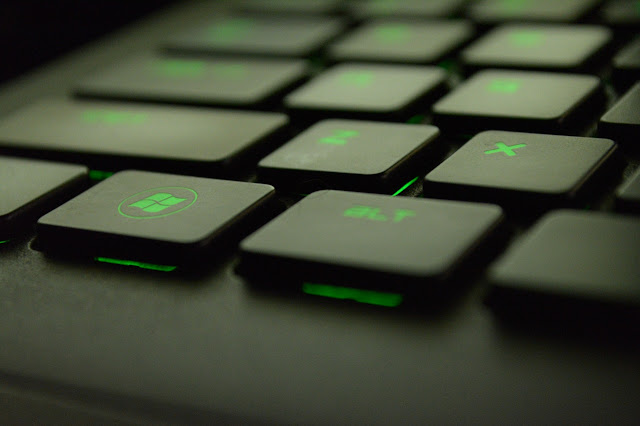Follow these Steps to keep your Windows Safe & Secure.
Technology continues to advance and develop over time. With the development of this technology, many benefits are obtained by humans. Such as, speed of work, quality and quantity of services, etc.
As much as we take benefits from these technologies we must also feel responsible to take proper security measures for the same.
Securing your computer or laptop based on Windows is not difficult. A few easy and simple steps can effectively keep your device safer.
So here are the 11 must have habits that will keep your IT system secure:
Don't ignore the Antivirus
Antivirus program has the function of guarding, securing, finding, and destroying viruses that may threaten your computer systems.
There's no need to look for antivirus applications from third parties to secure the computer. Windows already has a default security application that can be relied upon namely Windows Defender.
You can still install third-party antivirus if you want to ensure computer security. No need to use expensive antivirus. Instead, free antivirus is enough for your home computer.
Use a Firewall
Firewall is a security guard of your computer and is in charge of monitoring the entring and exiting of data, from the internet to your computer, and vice-versa. The function of this surveillance is to ensure that the files that come are safe files, and also ensure that the files that go out are not forcibly/stolen files.
If any requestor tries to pull your data via internet without your permission, the firewall will immediately hinder the process of sending that data, and block the file.
In general, firewalls are also effective at filtering out viruses, trojans, e-mail tapping, and spyware that record input data on your computer.
Update your OS patch when available
OS (Operating System) is the computer's system software, for e.g. Windows 7 or Windows 10.
Periodically, the OS developers provide an update patch for the operating system. So when you see an update notification appear on your computer screen, make sure to update your OS. With every update there comes improvements, and it does not rule out the possibility of added security enhancements.
Create are User Password
Today we often store passwords for our various accounts in the browser, ranging from social media accounts to online banking, to make it easier to log in. For this reason, we need to make sure that no one else can access this information.
Even if no one else uses your computer, you must still setup a user password for your computer as a good habit for safety purposes. In addition, you also have to make sure that your device automatically locks when not in use.
Both of these methods can be set by searching the Settings menu then selecting Accounts.
Tip: Use a complicated password combination. If the keywords you use are vocabularies in the dictionary, such passwords will be exposed using the program in just 2 seconds. While the combination of numbers, punctuation, and uppercase letters can only be dismantled with estimates of around millions of years!
Don't Download Carelessly
If you want to download any application, be sure to download it from its official site or from a trusted source.
Also, pay attention during the installation process. Don't just click the 'Next' button quickly, because you can add additional programs that may be unclear and suspicious.
Check the Application Permissions
Just as in our smartphones, Windows also now has a feature to control the permissions that an application can have.
To set it up, you just have to go to Settings then click Privacy.
Important access permissions to note are location, camera and microphone. Because there shouldn't be anything that can access the camera and microphone, except for things like making video calls.
Avoid Unknown Email Attachements
Never click on an unknown email attachment, which could possibly contain a computer virus. Before opening it, contact the sender to confirm the contents of the message. If you don't know the sender, it's best to delete the message and block the unknown sender's account.
Check before entering your Credentials
To avoid fraud that occurs via e-mail asking for username, password or personal information, you should reconsider so that you are not pushed into a fake website that encourages potential victims to enter their own data which can later be misuse by the hackers.
Back Up Regularly
Backup means to copy data to a place as backup data, if at any time the main data is damaged or lost. This is relatively easy to do if you subscribe to cloud and wifi -based data storage. Your data will theb be backed up automatically.
Create a Windows Emergency Boot Disk
Sometimes it happens that the computer does not start or load Windows when trying to turn ON, this is really painful.
Before restoring a backup, it is worth trying an emergency start using a previously created USB stick or DVD that restores settings, eliminates the effects of malicious software or unpacked programs, but does not delete documents and personal files.
It is a much smaller disk than the backup image and is just a set of tools for fixing Windows system errors.
Make a Note of the Windows Product Key
If you purchased a computer with Windows already installed or purchased Windows separately, be sure to note down the Windows key and keep it somewhere safe.
This Key will be required if you have to reinstall your OS from scratch and for those who have genuine Windows, it would be a shame if they didn't keep a note of their original Key.
So, were you aware or should I say, were you following these steps already, do share your feedback in the comments below!






















COMMENTS